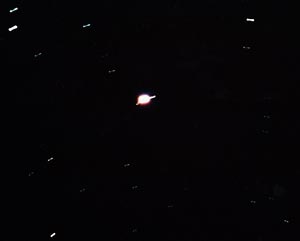Pole Star
The North Star is the name for the star located near the north pole, most suitable for maritime trades in the northern hemisphere. To get this name, a star must be visible from the Earth and close to the arctic of the sky. The most suitable star in recent times is Polaris. North Star should not be confused with North Star.
 Arctic stars in history have been used by explorers, maritime and jungle users to determine the latitude they are there. From any point north of the equator, the value of the angle from the horizon to the North Star (its altitude) is equal to the latitude from which the observer measures the aforementioned angle value. For example, the value of the Arctic star angle to a person at 30 ° latitude will be equal to about 30 °.
Arctic stars in history have been used by explorers, maritime and jungle users to determine the latitude they are there. From any point north of the equator, the value of the angle from the horizon to the North Star (its altitude) is equal to the latitude from which the observer measures the aforementioned angle value. For example, the value of the Arctic star angle to a person at 30 ° latitude will be equal to about 30 °.
Polaris has an apparent brightness of 1.97. Historically, around 3000 BC, the faded star Thuban in the constellation Draco was once considered a North Star; and with the apparent brightness of 3.67 it is about 5 times dimmer than Polaris. The bright star Vega in the constellation Lyra will be the Arctic star around 14,000. In comparison with the brightest stars, Sirius (or Mars), the apparent brightness is −1.46 (assuming we consider the Sun to have an apparent brightness of ,826.8).
Currently, there is no Antarctic with the same benefits as Polaris; Blurred star σ Octantis is closest to the Antarctic of the sky. However, the constellation Crux, (Nam Cao or the constellation of the Southern Cross), points directly to Antarctica.
- How does the compass tell us where the North pole is at the South Pole?
- The pole from the North of the Earth is ... shifting
- See thousands of sparkling star streaks in the sky
- The solar field is about to turn polar
- Learn about the North Star
- The scientists were skeptical of discovering Star Death
- The pole from the North is moving to Russia
- The north pole from the Earth is moving
- For the first time, a star has been discovered in a star
- 'The third pole' of the Earth is melting
- The mysterious age of the mysterious star
- Interesting things you didn't know about the 25,800 year old Northern star
 Van Allen's belt and evidence that the Apollo 11 mission to the Moon was myth
Van Allen's belt and evidence that the Apollo 11 mission to the Moon was myth The levels of civilization in the universe (Kardashev scale)
The levels of civilization in the universe (Kardashev scale) Today Mars, the sun and the Earth are aligned
Today Mars, the sun and the Earth are aligned The Amazon owner announced a secret plan to build a space base for thousands of people
The Amazon owner announced a secret plan to build a space base for thousands of people